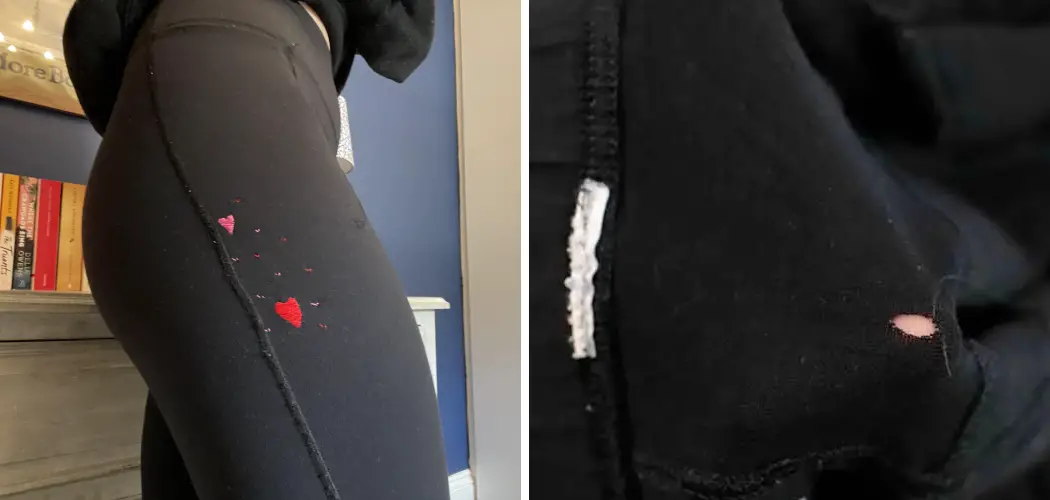Do you have a favorite pair of leggings with annoying holes or tears that seem to get bigger every time you wear them? As much as we love our soft, stretchy, and comfy leggings, they are also prone to damage and it’s heartbreaking when we can no longer wear them.
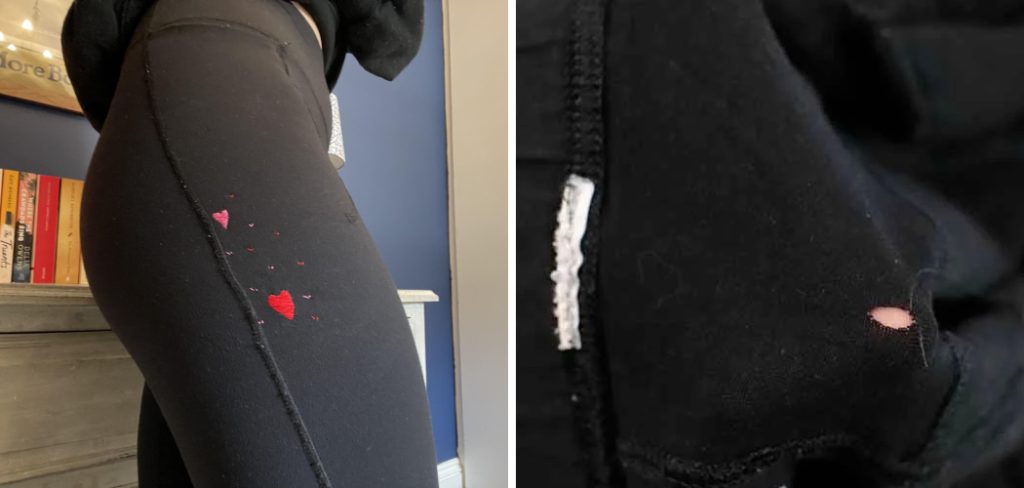
But fear not, there’s still hope for your beloved leggings! In this blog post, I will share with you an amazing method to fix holes in leggings without sewing. Yes, you read it right- no needles or thread required! Keep reading to find out how to fix holes in leggings without sewing.
What Causes Holes in Leggings?
1 . Wearing Out Over Time
If you wear your leggings often, it’s natural for them to eventually develop holes. Whether you’re wearing them for exercise or just as a comfortable pair of pants, the friction from movement can cause wear and tear on the fabric.
2. Poor Quality Material
Another common cause for holes in leggings is low-quality material. Some fabrics are more prone to tearing or fraying, especially when they are stretched during physical activity. If you notice your leggings developing holes after just a few years, it’s likely due to the fabric not being strong enough.
3. Incorrect Washing and Drying
The way you wash and dry your leggings can also contribute to holes forming. Harsh detergents or high heat in the dryer can weaken the fabric and make it more susceptible to tears. It’s important to follow the care instructions on your leggings and avoid using harsh chemicals or high heat when cleaning them.

4. Snags and Pulls
Accidents happen, and sometimes our leggings can get snagged on something sharp or pulled by a pet’s claws. These small incidents may seem insignificant, but they can cause small holes that gradually get bigger over time. Be mindful of your surroundings and be careful not to catch your leggings on anything sharp or abrasive.
15 Ideas on How to Fix Holes in Leggings Without Sewing
If you have a hole in your leggings, don’t worry – there are ways to fix them without sewing! Here are a few methods you can try:
1 . Duct Tape Method
This is a quick and easy method to fix small holes in your leggings. Simply place a piece of duct tape on the hole from both sides and press it down firmly. Also, make sure to smooth out any creases or wrinkles. The duct tape will act as a patch and hold the hole together.
2 . Paperclip Method
If you have a small tear in your leggings, you can use a paperclip to fix it. First, straighten out the paperclip and then insert one end into the hole from one side of your leggings and the other end from the other side. This will hold the hole together and prevent it from getting bigger.
3 . Clear Nail Polish Method
If you have a small hole in your leggings, you can also use clear nail polish to fix it. Simply apply a layer of clear nail polish on and around the edges of the hole. This will act as glue and hold the fabric together. Make sure to let it dry completely before wearing your leggings.
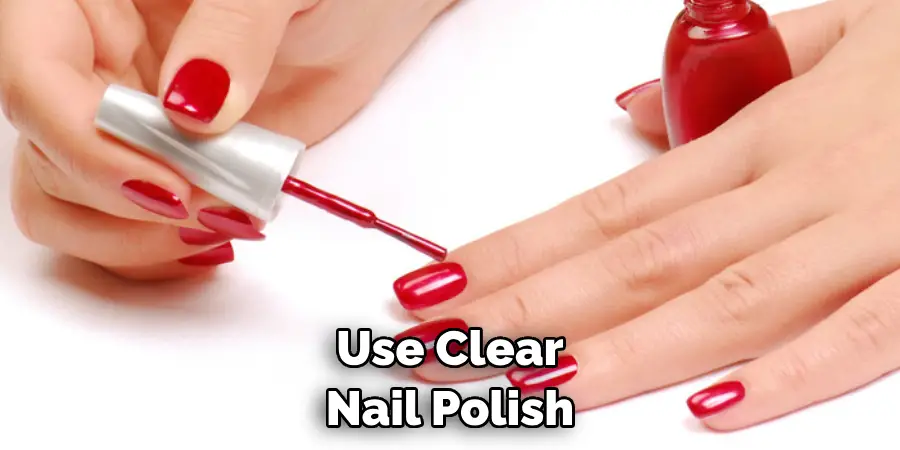
4 . Iron-on Patches
Iron-on patches are a great way to fix holes in your leggings without sewing. They come in various colors and patterns, so you can choose one that matches your leggings. Simply follow the instructions on the patch packaging to attach it to your leggings.
5 . Fabric Glue
Fabric glue is another alternative to sewing holes in leggings. Simply apply a small amount of fabric glue on and around the edges of the hole and press it together. Make sure to let it dry completely before wearing your leggings.
6 . Fusible Web Tape
Fusible web tape is a thin, adhesive strip that can be used to fix holes in leggings without sewing. Simply place the tape on and around the hole, cover it with a cloth, and iron over it for a few seconds. The heat from the iron will activate the adhesive and hold the hole together.
7 . Heat-activated Seam Tape
Similar to fusible web tape, heat-activated seam tape can also be used to fix holes in leggings without sewing. Simply place the tape on and around the hole, cover it with a cloth, and use a hair straightener or iron on the lowest setting to activate the adhesive.
8 . Iron-on Mending Fabric
Iron-on mending fabric is a self-adhesive material that can be used to patch holes in leggings. Simply cut out a piece of the fabric and place it on the hole, then use an iron on the lowest setting to activate the adhesive.
9 . Sock Patches
This method is perfect for small holes in your leggings. Simply cut out a patch from an old sock or t-shirt and glue it onto the hole using fabric or hot glue. Make sure to let it dry completely before wearing your leggings.
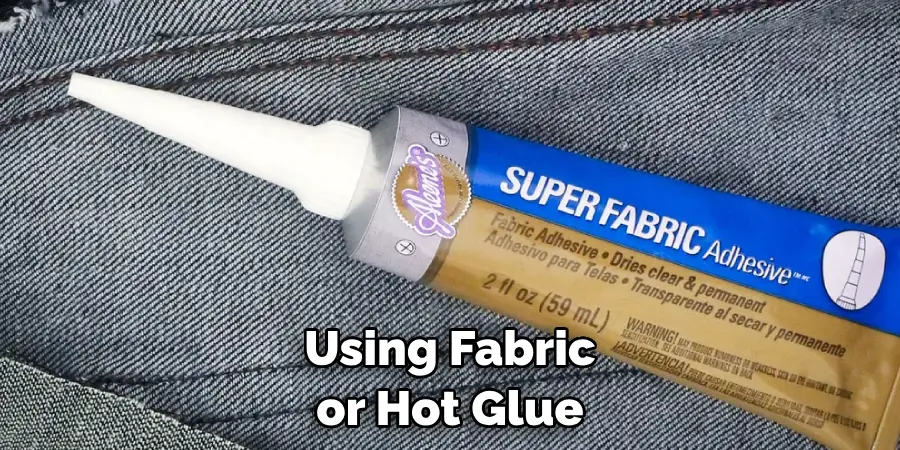
10 . Embroidery Method
This method not only fixes the hole in your leggings but also adds a unique touch to them. Simply embroider over the hole using colorful thread, making sure to cover the edges of the hole. This will reinforce the fabric and prevent it from tearing further.
11 . Patchwork Method
Patchwork is a great way to fix holes in leggings and get a new, unique look. Cut out small pieces of fabric in different colors or patterns and sew them onto the hole using a whip stitch or blanket stitch.
12 . Fray Check Method
If you have a small hole caused by fraying threads, you can use a fray check to stop it from getting bigger. Simply apply a small amount of fray check on and around the edges of the hole and let it dry completely.
13 . Safety Pin Method
This method is similar to the paperclip method but uses safety pins instead. Simply insert one end of a safety pin into one side of the hole and the other end into the other side to hold it together. Make sure to use a large enough safety pin so it doesn’t poke through the fabric.
14 . Gel Super Glue Method
If you have a small hole in your leggings, you can also use gel super glue to fix it. Simply apply a small amount of glue on and around the edges of the hole and press it together. Be careful not to get any glue on your skin.
15 . No-Sew Iron-on Adhesive
No-sew iron-on adhesive is a great alternative to sewing holes in leggings. Simply cut out a piece of the adhesive and place it over the hole, cover it with a cloth, and use an iron on the lowest setting to activate the adhesive. This will hold the hole together without any sewing required.
Frequently Asked Questions
What Precautions Should I Take While Repairing My Leggings?
Before starting the repair process, make sure that you have all the necessary materials and tools at hand. Keep a pair of scissors, fabric glue, iron-on patches or fusible webbing, and a piece of cardboard handy.
It is also important to wash and dry your leggings before attempting to fix any holes. This will ensure that the leggings are clean, and there is no risk of the repair materials not sticking properly.
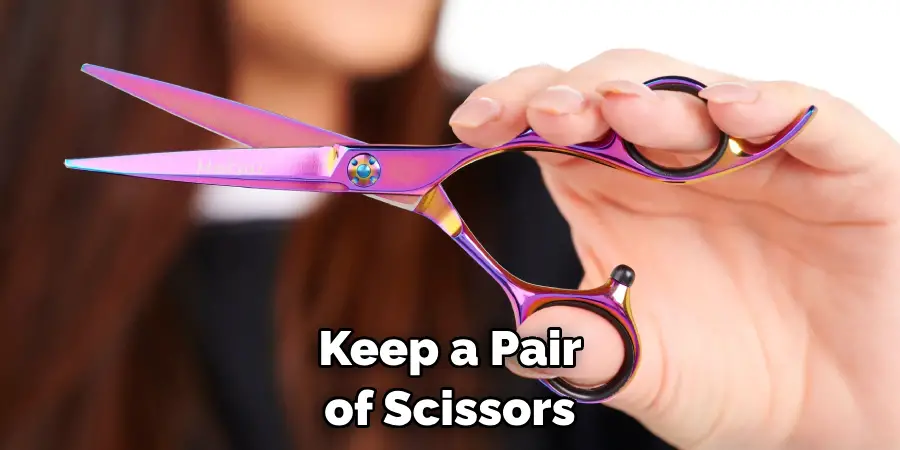
Can I Use Fabric Glue to Fix Holes in the Leggings?
Yes, fabric glue can be a great option for repairing holes in leggings. It is especially useful for small holes as it provides a strong bond and dries clear. However, keep in mind that fabric glue is not a permanent solution and may not hold up well in the long run.
Can I Use Iron-On Patches to Repair My Leggings?
Iron-on patches are another popular option for fixing holes in leggings. They are easy to use and come in a variety of colors and designs, making it easy to find one that matches your leggings. However, keep in mind that iron-on patches may not work well on certain fabrics, such as spandex or nylon, and may not be as strong as sewing.
How Can I Use Fusible Webbing to Repair My Leggings?
Fusible webbing is a thin adhesive material that can be used to repair holes in leggings. To use it, cut a piece of fusible webbing that is slightly larger than the hole and place it over the back of the hole. Then, cover it with a piece of cardboard and iron over it for about 10-15 seconds. This will heat the adhesive and bond it to the leggings. Once cooled, remove the cardboard and trim off any excess webbing.
Conclusion
Now you know how to fix holes in leggings without sewing! This is a great skill to have, especially if you’re someone who loves wearing leggings as much as I do. With these simple methods, you can easily fix any holes and prolong the life of your favorite pair. Remember to always be careful when using a hot iron or scissors, and try not to stretch out the fabric too much while making repairs.

